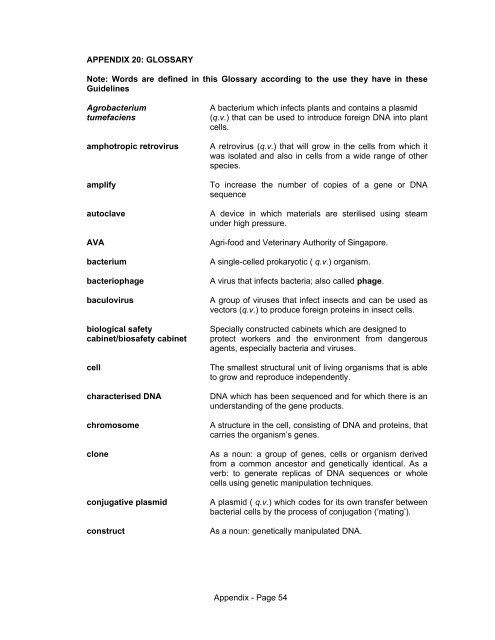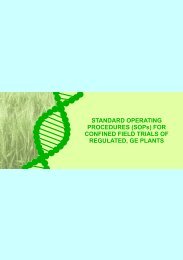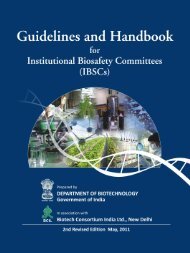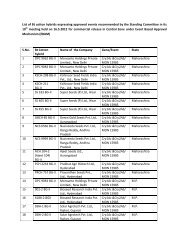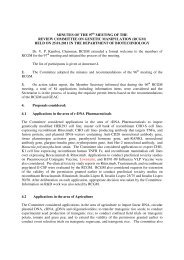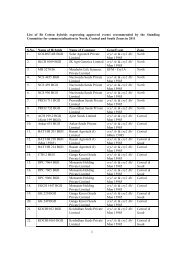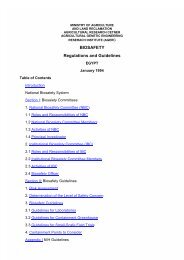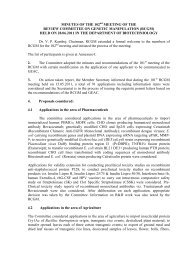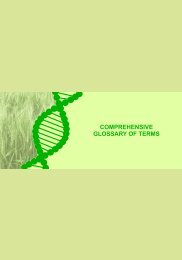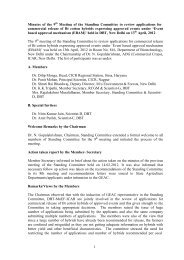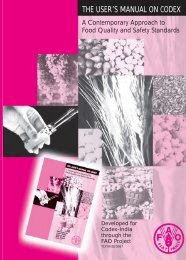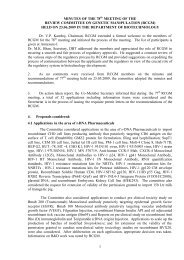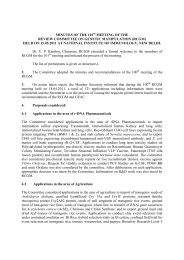Biosafety Guidelines For Research On Genetically Modified ...
Biosafety Guidelines For Research On Genetically Modified ...
Biosafety Guidelines For Research On Genetically Modified ...
You also want an ePaper? Increase the reach of your titles
YUMPU automatically turns print PDFs into web optimized ePapers that Google loves.
APPENDIX 20: GLOSSARY<br />
Note: Words are defined in this Glossary according to the use they have in these<br />
<strong>Guidelines</strong><br />
Agrobacterium<br />
tumefaciens<br />
amphotropic retrovirus<br />
amplify<br />
autoclave<br />
AVA<br />
bacterium<br />
bacteriophage<br />
baculovirus<br />
biological safety<br />
cabinet/biosafety cabinet<br />
cell<br />
characterised DNA<br />
chromosome<br />
clone<br />
conjugative plasmid<br />
construct<br />
A bacterium which infects plants and contains a plasmid<br />
(q.v.) that can be used to introduce foreign DNA into plant<br />
cells.<br />
A retrovirus (q.v.) that will grow in the cells from which it<br />
was isolated and also in cells from a wide range of other<br />
species.<br />
To increase the number of copies of a gene or DNA<br />
sequence<br />
A device in which materials are sterilised using steam<br />
under high pressure.<br />
Agri-food and Veterinary Authority of Singapore.<br />
A single-celled prokaryotic ( q.v.) organism.<br />
A virus that infects bacteria; also called phage.<br />
A group of viruses that infect insects and can be used as<br />
vectors (q.v.) to produce foreign proteins in insect cells.<br />
Specially constructed cabinets which are designed to<br />
protect workers and the environment from dangerous<br />
agents, especially bacteria and viruses.<br />
The smallest structural unit of living organisms that is able<br />
to grow and reproduce independently.<br />
DNA which has been sequenced and for which there is an<br />
understanding of the gene products.<br />
A structure in the cell, consisting of DNA and proteins, that<br />
carries the organism’s genes.<br />
As a noun: a group of genes, cells or organism derived<br />
from a common ancestor and genetically identical. As a<br />
verb: to generate replicas of DNA sequences or whole<br />
cells using genetic manipulation techniques.<br />
A plasmid ( q.v.) which codes for its own transfer between<br />
bacterial cells by the process of conjugation (‘mating’).<br />
As a noun: genetically manipulated DNA.<br />
Appendix - Page 54


